Today we were honoured to welcome master cedar weaver and natural dyer, Rita Kompst, of the xʷməθkʷəy̓əm (Musqueam) nation to lead a cedar bracelet weaving workshop.
15 participants joined this very healing workshop. Rita shared how she began to weave 10 years ago after the death of her father. She wove to help her process her grief and heal. She continued to weave through the loss of 6 other family members and she continues to weave and teach her art of weaving to heal today.
Harvesting the Cedar
Rita described how she harvests the cedar bark from mature Western red cedar trees. A tree must be large enough that she can wrap her arms around it. She also never harvests from trees that have been harvested from before, as those trees need about 100 years to heal before they can be harvested from again. When Rita harvests the cedar she makes sure to say a prayer of thanks and offer tobacco to the tree. The tobacco provides a natural source of nitrogren that aids in the tree healing after harvesting. She then uses an axe to make a cut into the tree and with two hands she pulls up the cedar bark (about 1-2 handwidths thick). Rita continues to pull up on the bark and step back, as it releases a strip, up to 50 feet long. She makes a prayer and when the tree is ready to release the top of the cedar bark, it will break off.
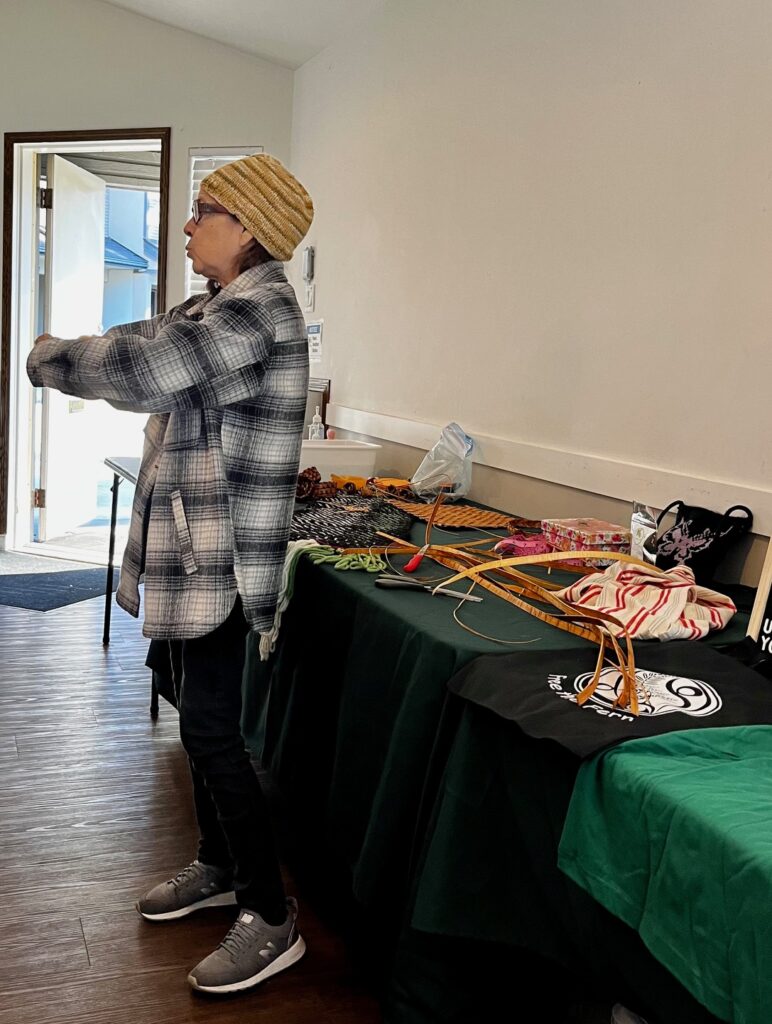
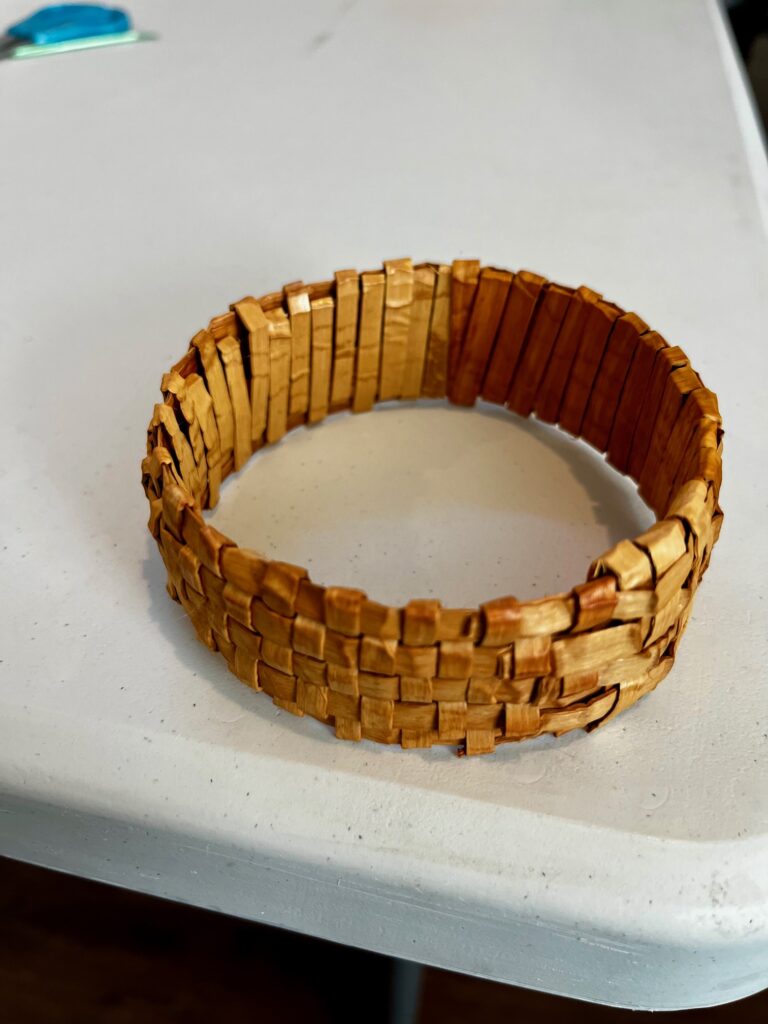

Preparing the bark
Each strip of cedar bark can then be carefully separated into up to 8 different layers. Rita humbly admits that she is able to separate the bark into 5 layers and is still working towards being able to separate it into 8. Rita then divides the cedar into long strips. For bracelet weaving, the strips are referred to as “the base” and the “weft”. These strips are soaked in water prior to weaving. The cedar can also be died using natrual plant dye or red beetles to give it various shades of colour.
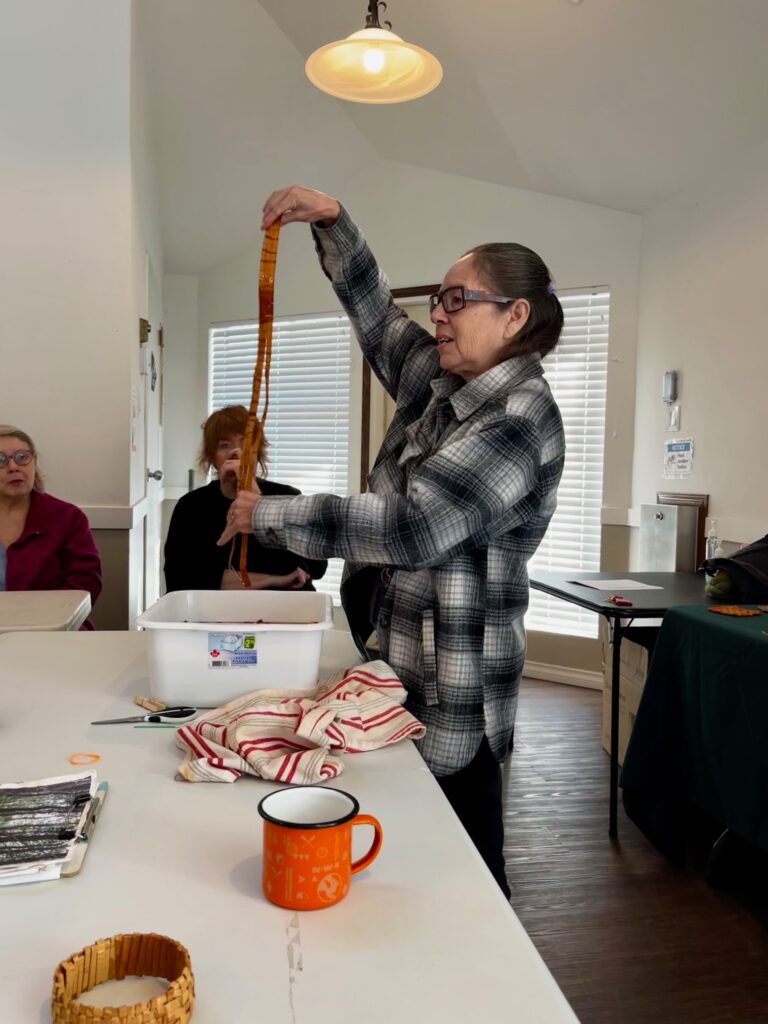
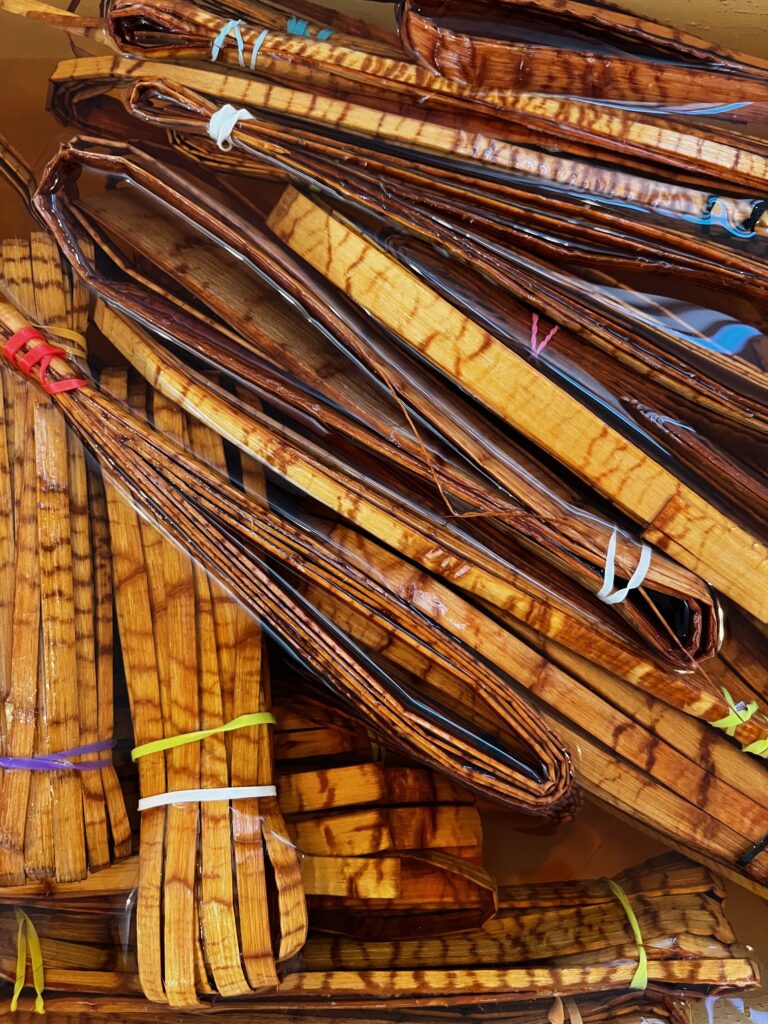
Weaving
To begin weaving a bracelet, each participant wrapped the base strips around the largest part of their hand (near the knuckles) to measure the size of the bracelet they would make. They then used a clothes pin to hold the base strips in a loop. The thinner single, weft strip, is then woven over and under the base strips. Weaving over and under, over and under, again and again allows the mind to calm and feel at peace. After finishing the bracelet some participants chose to stitch a decorative abolone button onto their bracelet. Each bracelet turned out to be so unique and beautiful!
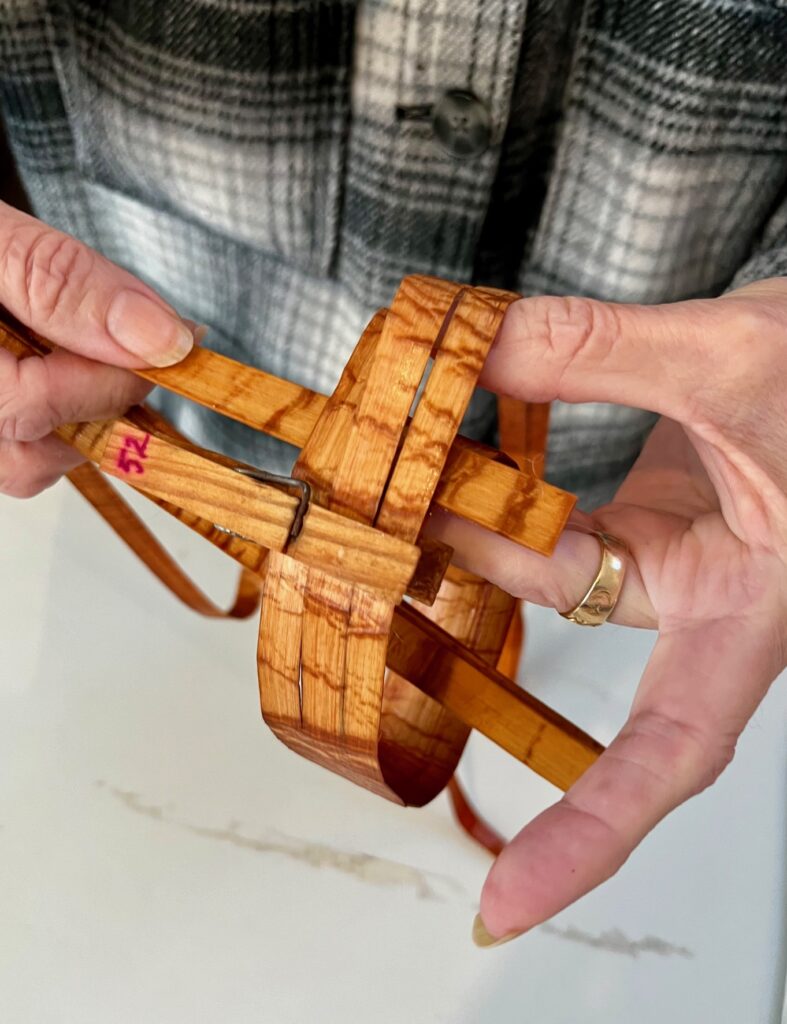
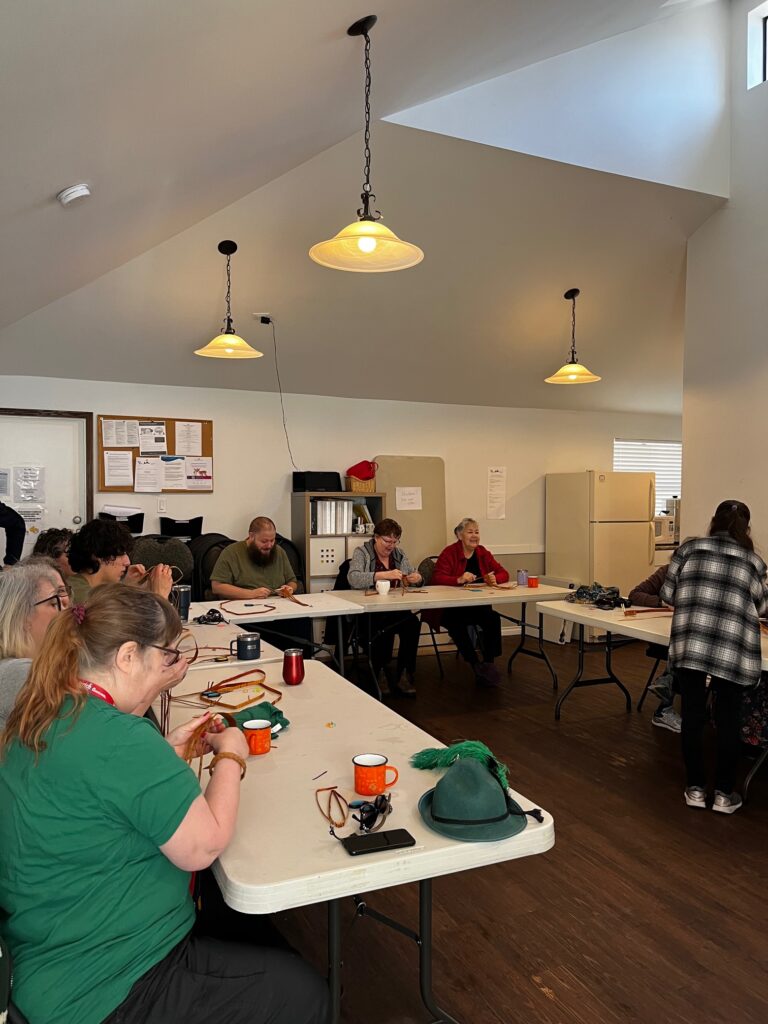
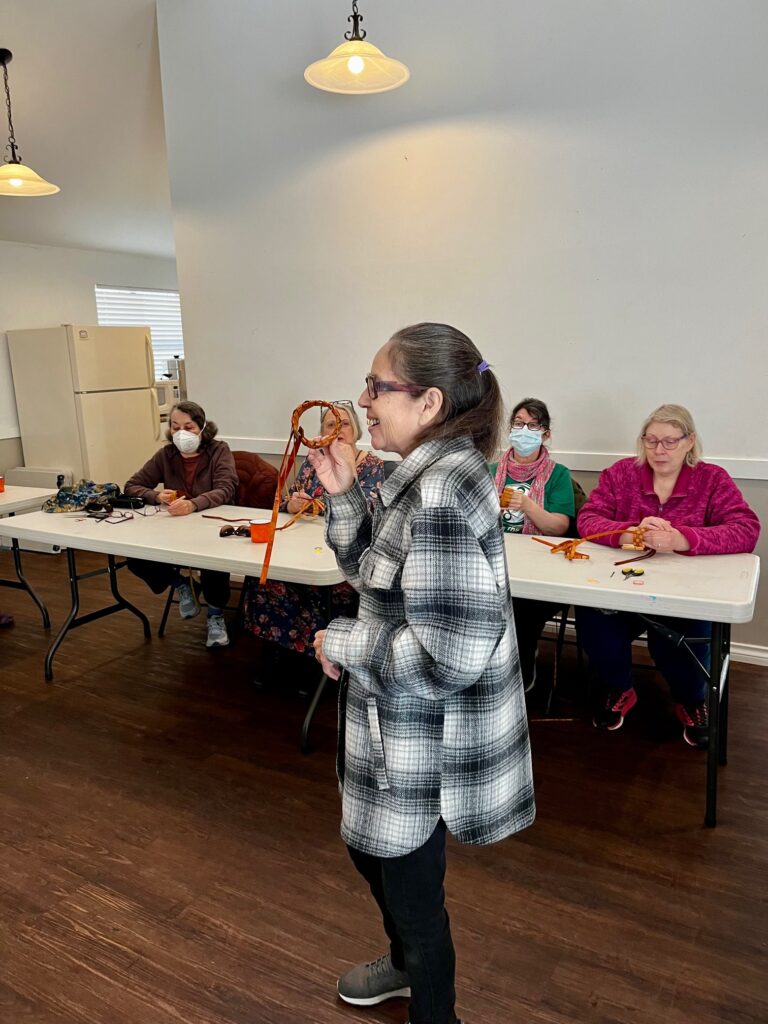
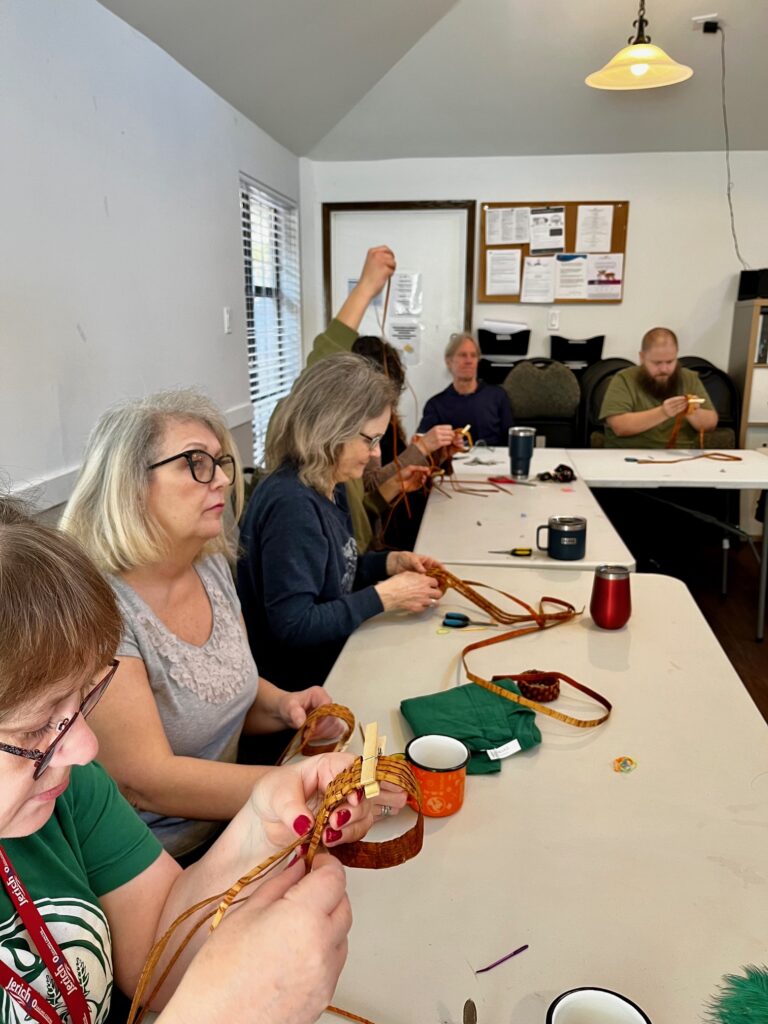
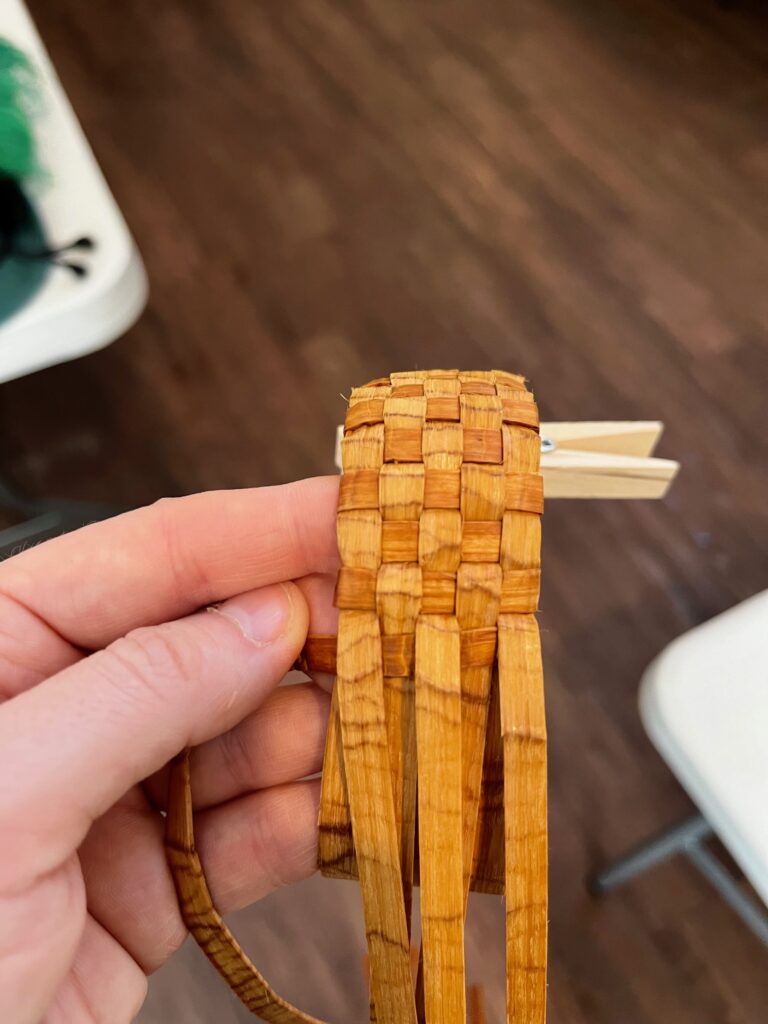

What a blessing it was to have Rita Kompst share her traditional weaving with us. We hope to have Rita return in the future to share her knowledge of wool dying with us.
This workshop was made possible thanks to funding support from Park People.